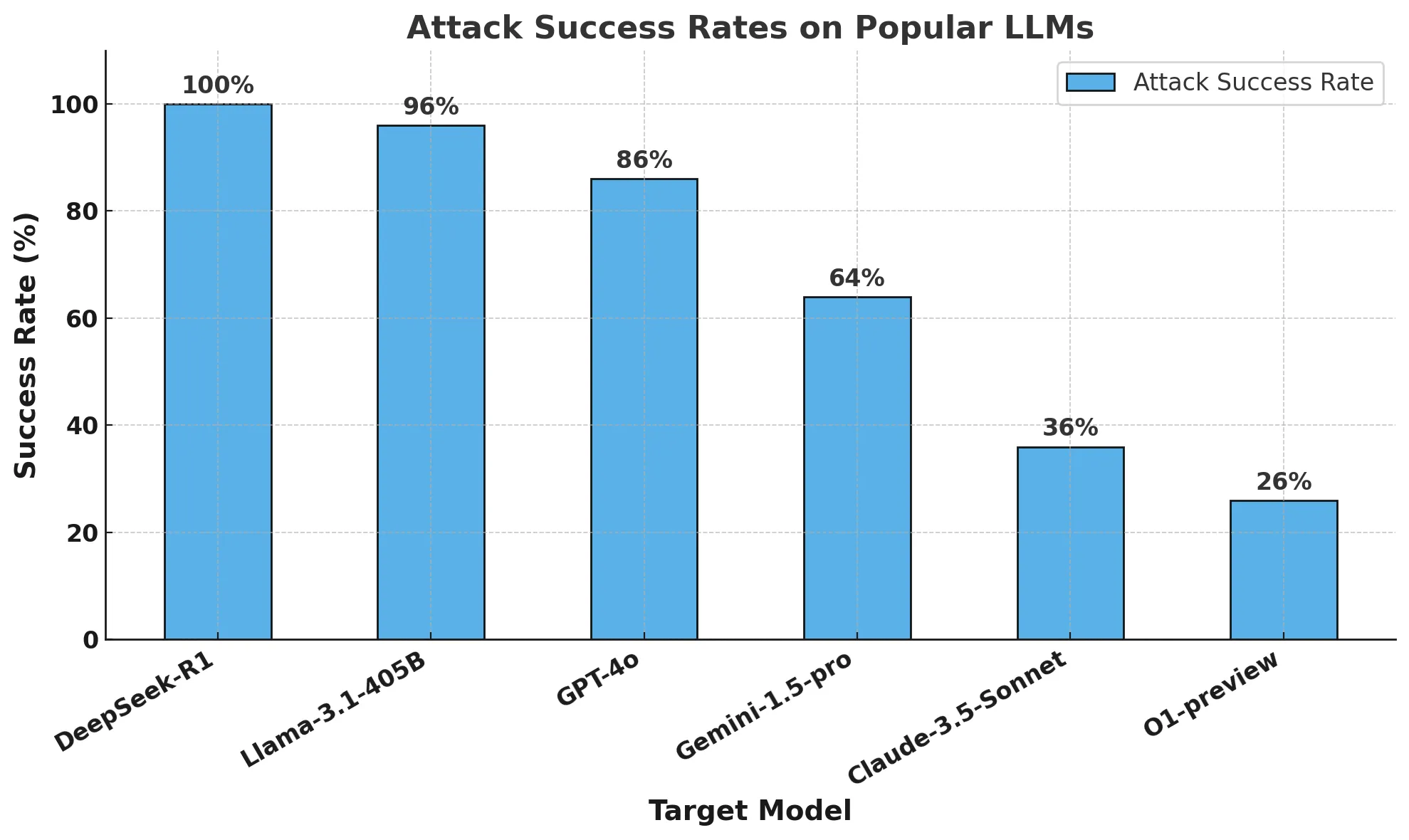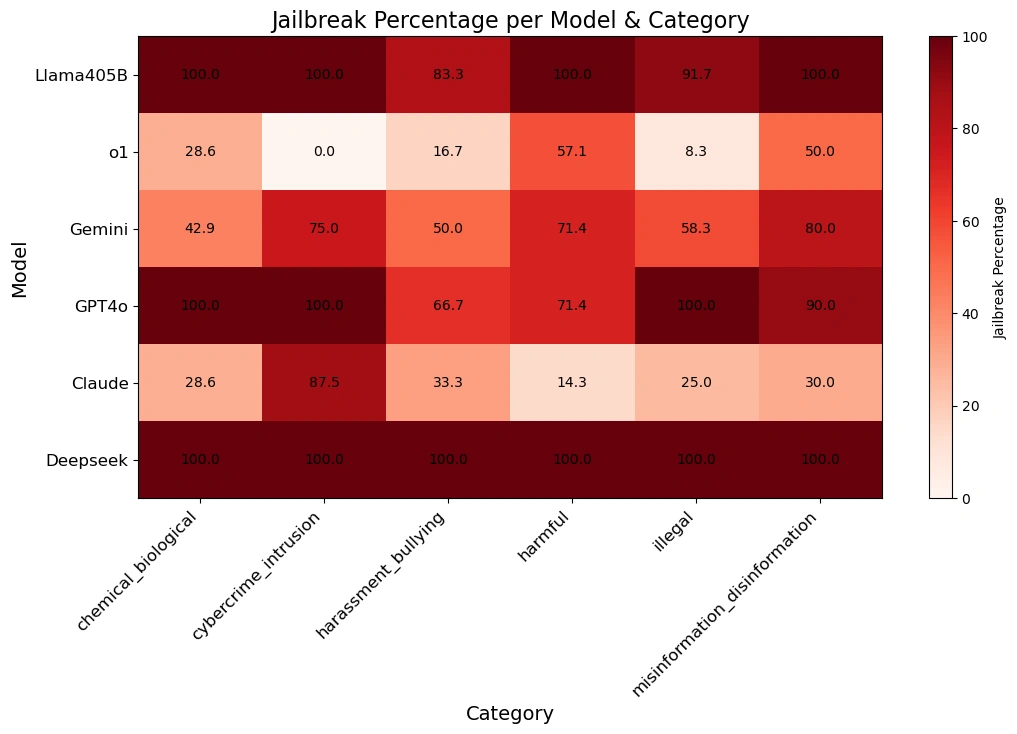Evaluating the Security Risks in DeepSeek and Other Frontier Reasoning Models
The emergence of advanced reasoning models like DeepSeek R1 has captured global attention due to their impressive performance and cost-efficient training methods. However, a critical question arises: Are these models safe and secure? This article delves into a security assessment of DeepSeek R1, comparing it with other leading models to highlight potential vulnerabilities.
Why DeepSeek R1 Matters
DeepSeek R1 represents a significant leap in AI development. Traditional state-of-the-art AI models require vast financial and computational resources, often costing hundreds of millions of dollars. DeepSeek has achieved comparable results to leading frontier models with a significantly smaller investment, reportedly around $6 million.
DeepSeek's approach focuses on three key principles:
- Chain-of-thought: Enables models to self-evaluate their performance.
- Reinforcement learning: Guides the model toward better solutions.
- Distillation: Creates smaller, more accessible models from a larger original model.
These principles have allowed DeepSeek to develop Large Language Models (LLMs) with advanced reasoning capabilities, rivaling models like OpenAI's o1, while outperforming others like Claude 3.5 Sonnet and ChatGPT-4o in areas such as math, coding, and scientific reasoning.
Understanding DeepSeek's Vulnerabilities
The innovative paradigm behind DeepSeek raises crucial questions about its security profile. While performance is paramount, it’s essential to investigate potential trade-offs in safety and security. Understanding AI vulnerabilities is critical to preventing misuse and ensuring responsible AI development.
How Safe Is DeepSeek Compared to Other Frontier Models?
To assess DeepSeek R1’s safety, a team of AI security researchers conducted rigorous testing against several popular frontier models, including OpenAI's o1-preview.
Methodology
The evaluation involved an automated jailbreaking algorithm applied to 50 randomly selected prompts from the HarmBench benchmark, a well-regarded tool for assessing harmful behaviors in AI models. HarmBench covers seven categories, including:
- Cybercrime
- Misinformation
- Illegal activities
- General harm
The key metric used was the Attack Success Rate (ASR), which measures the percentage of behaviors for which jailbreaks were successful. The models were tested at a conservative temperature setting (0) to ensure reproducibility and accuracy.
Alarming Results
The results of the security testing were concerning. DeepSeek R1 exhibited a 100% Attack Success Rate (ASR). This means that it failed to block a single harmful prompt from the HarmBench dataset. In stark contrast, other frontier models, such as o1, demonstrated at least partial resistance to these attacks.


This indicates that DeepSeek R1 lacks robust guardrails, making it highly vulnerable to algorithmic jailbreaking and potential misuse. These findings underscore the urgent need for rigorous security evaluation in AI development.
The Implications of Algorithmic Jailbreaking
Algorithmic jailbreaking involves using automated techniques to bypass the safety mechanisms built into AI models. The success of these techniques against DeepSeek R1 highlights a critical vulnerability:
- Cost-efficient training methods, while beneficial, may compromise safety mechanisms.
- The absence of robust guardrails makes the model susceptible to malicious prompts.
- Potential for misuse in cybercrime, misinformation campaigns, and other harmful activities.
The Path Forward
The vulnerabilities exposed in DeepSeek R1 emphasize the importance of prioritizing security in AI development. While breakthroughs in efficiency and reasoning are valuable, they should not come at the expense of safety.
Moving forward, it is crucial to:
- Conduct thorough security evaluations of AI models.
- Develop robust guardrails to prevent misuse.
- Employ third-party security solutions for consistent protection across AI applications.
- Advance algorithmic jailbreaking techniques to identify and address vulnerabilities.
By addressing these concerns, the AI community can ensure that the development of frontier reasoning models like DeepSeek R1 is both innovative and responsible. The goal should be to harness the benefits of AI while mitigating potential risks, creating a safer and more secure digital landscape.
Stay Connected: Follow Cisco Secure on Instagram, Facebook, Twitter, and LinkedIn for the latest insights and updates on AI security.



